If a water purifier is maintained properly, it can work for 4 to 5 years without any trouble. After that, you may begin to face some common water purifier problems. Water leakage is not the only common water purifier problem that is faced by people. There are various other issues that can arise after a few years of water purifier usage, including unusual taste, unusual smell, noisy faucet, and slow water output. In this article, we have listed the 5 most common water purifier problems and their solutions so that you can easily identify the problem and get it fixed.
5 Most Common Water Purifier Problems And Their Solutions
RO and UV water purifiers are the most commonly found water purifiers in most homes, and each of them can have several issues. However, we have created a list of the 5 most common water purifier problems and tried to list their typical solutions.
1. Unusual Water Taste Or Smell From The Water Purifier
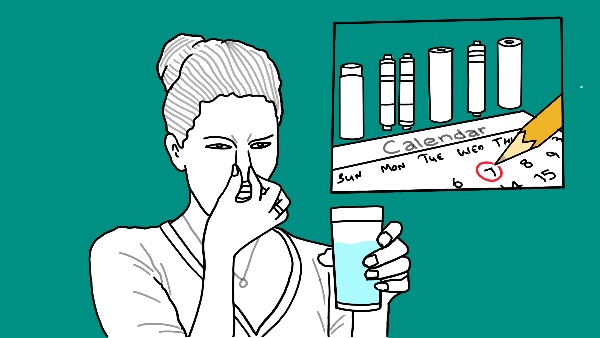
If your RO or UV water purifier is offering water with an unusual smell or taste, it could be because a biofilm has accumulated in one or more parts of the water purifier. A biofilm is a layer of organic and inorganic material collected on the surface of a water purifier. Due to this, the levels of contaminants in the water rise. The quickest solution for this is to replace any clogged filters or the membrane. Once the filters and the membrane are changed, you can check if there is an improvement in the taste or odour of the water. Ensure that the filters are changed every 12 months.
RO purifiers use copper tubing in their mechanism. If you notice that the water has a metallic taste, it means the water may have dissolved a high amount of sulfate, chloride, and bicarbonates from the copper tubing, leaving a metallic taste in the water. Similarly, if you find the water from the purifier to be slightly salty, it means the salt and other solids have dissolved in the water. The RO water purifier needs to be fully functional to eliminate these particles from the water. If the water from your purifier tastes saltier than usual, you should call a professional for a maintenance check and get the purifier cleaned. You should carry out this procedure once every 6 months.

2. Slow Water Flow From The Water Purifier
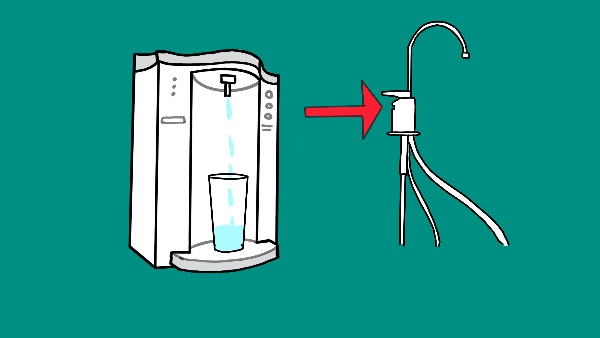
If your water purifier is releasing purified water very slowly and fills just half the glass during the same time, it is because you either have low volume or low water pressure. An RO typically needs a minimum pressure of 40 to 60 PSI (pounds per square inch) to operate properly. There could also be a malfunction in the water storage tank of the purifier, leading to this issue. The purifier’s water storage tank contains an air bladder so that it releases water quickly. The more the water, the higher the pressure.
If there is leakage in the bladder, it may not offer enough release pressure and that leads to slow water flow from the water purifier’s faucet. It is also possible that the water filter’s cartridges have been clogged due to high sediment content, which could lead to slow water output. If the filters are clogged, get them replaced by a water purifier service professional.
3. Water Purifier’s Faucet Is Making Unusual Noises
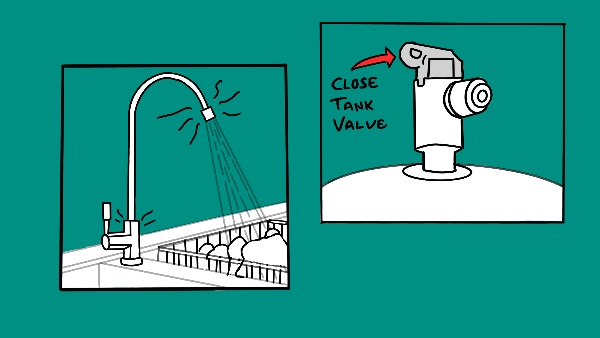
If you hear a strange noise from your water purifier’s faucet, especially after replacing the filters and the membrane, it is due to the air being pushed out of the system. It could also be due to a change in the water pressure within the system. Soon after replacing the filter, if the noise doesn’t subside, call a professional to check if the tubing was properly installed. The noise could also occur if the water tank’s valve is not closed properly.
4. Water Is Leaking From The Purifier’s Faucet Or Filter/Membrane
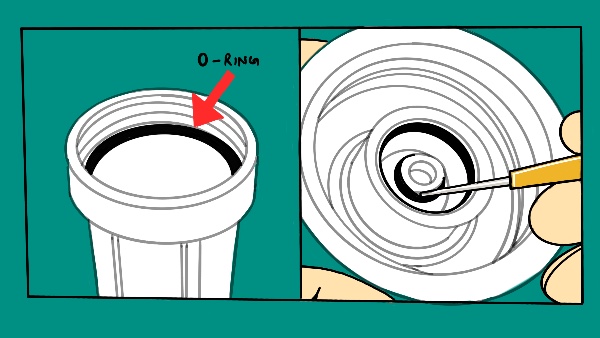
If there is constant water leakage from the purifier’s faucet, a part of the purifier is probably not fitted correctly. To fix the issue, the ill-fitted part needs to be identified and replaced or fitted tightly. If the same issue is found in the water purifier’s filter or membrane, it could be due to a worn-out O-ring. An O-ring is a soft rubber ring that stops water from leaking out of the parts.
If the water purifier is leaking water from the faucet, filter, or membrane, call a service engineer to check if the valve is properly closed and if the O-rings are in good condition. If the O-ring is cracked or not in a good condition, they need to be fitted tightly to replaced.
5. RO Water Tank Does Not Fill Up
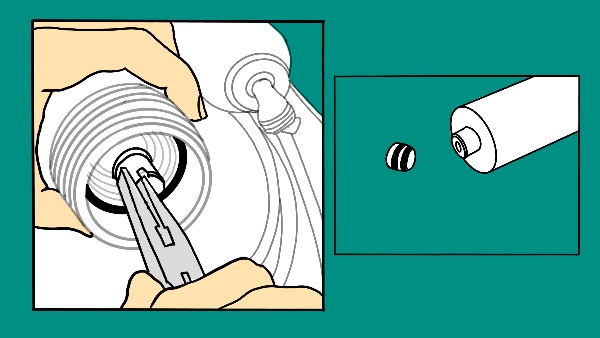
Another common problem that is found in many RO and UV water purifier is that the water storage tank doesn’t get filled up completely. This is caused due to extremely low water pressure in the purifier. As we mentioned earlier, an RO water purifier needs a minimum pressure of 40 to 60 PSI (Pounds Per Square Inch) to operate properly. If the water pressure is less than 40 PSI, you will need to increase the pressure, which can be done with the help of a water pump.
A damaged RO membrane could also be a possible reason for the water tank not getting filled completely. The semipermeable RO membrane is a barrier that allows only water molecules to pass through to the other side while blocking the passage of water contaminants like dust, dirt, viruses, and bacteria, thus offering clean and safe drinking water. When the membrane gets clogged after a few months of usage, the water filtration process slows down and the water quality degrades. If the membrane is clogged or damaged, it should be replaced to avoid any health issues.
An RO membrane inside a water purifier typically needs to be replaced once a year, depending on the usage. This ensures clean and healthy drinking water.
RO Vs UV Water Purifier: Which Is Better?
A lot of people ask this question before buying a water purifier. Is an RO water purifier better for their needs or a UV water purifier. We have answered that question in detail in our dedicated and in-depth water purifier buying guide.
RO Purifiers
With the help of an RO membrane, RO purifiers purify water so that it is safe from contaminants. This helps remove impurities like dissolved solids and invisible particles like bacteria in the water. Regular maintenance is a must for RO purifiers so that it functions properly for a long period of time. These purifiers are best suited for homes that receive below-par water supply, and they are expensive compared to UV purifiers. They are mostly recommended for places with high levels of TDS (total dissolved solids) in the water, commonly known as hard water.
The good thing about RO water purifiers is that it creates a lot of pressure to separate out heavy minerals and salt contents from the water. This decreases TDS levels in the water by forcing the water through a synthetic membrane. These purifiers are the best to use during monsoon as the water quality is not ideal during this season.
Water with 45 to 70 TDS is considered healthy and safe for drinking. However, RO purifiers filter out excessive minerals from the water and cut down the water up to 40 TDS, which is their only disadvantage. However, some RO water purifiers offer an option to adjust TDS levels so that you can get water that tastes good. A good RO costs anywhere between Rs 15,000 to Rs 25,000, depending on the brand and model. You can find the best RO water purifiers in India in our dedicated article. You can also read about an RO water purifier’s maintenance cost, its advantages and disadvantages in our article.
Ultra Violet (UV) Purifiers
UV water purifiers work by using UV rays to kill germs and microbes in the water. As far as maintenance is concerned, UV water purifiers require annual replacement for better performance. However, after a year there is no assurance that the UV light will continue disinfecting the water thoroughly. UV purifiers are more commonly used in Indian homes as they are economical and still do the job of producing healthy drinking water. UV purifiers cost anywhere between Rs 6,500 to Rs 15,000. You can read more about how UV water purifiers work, their maintenance cost, and their advantages and disadvantages.
RO And UV Water Purifier Annual Maintenance Plan By Onsitego
You can watch the video embedded below to see how Onsitego’s service professionals service a water purifier.
To keep your water purifier running in good condition for longer it needs to be maintained properly and periodically. However, remembering when to get a water purifier maintained is hard as most users are busy with their lives.
